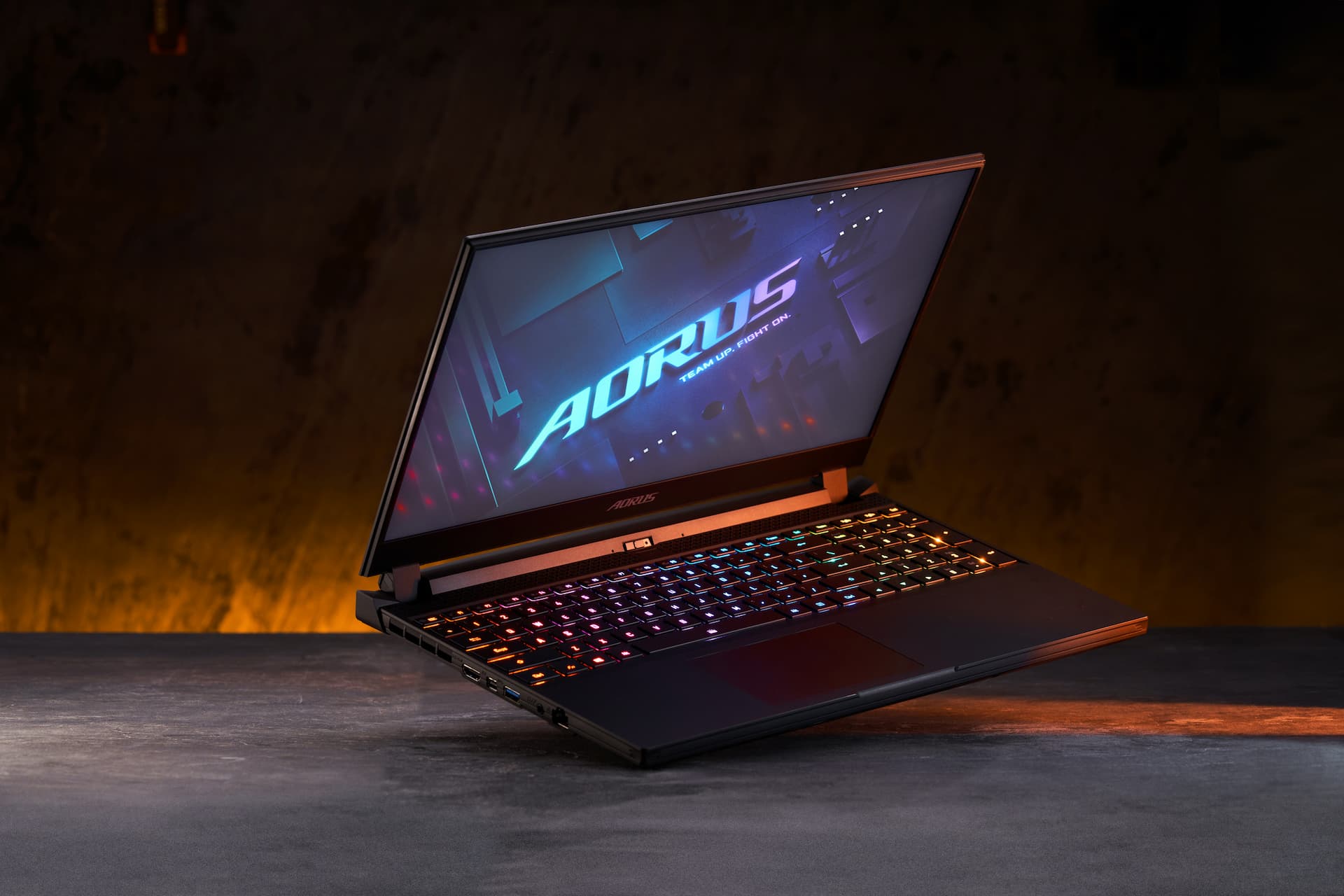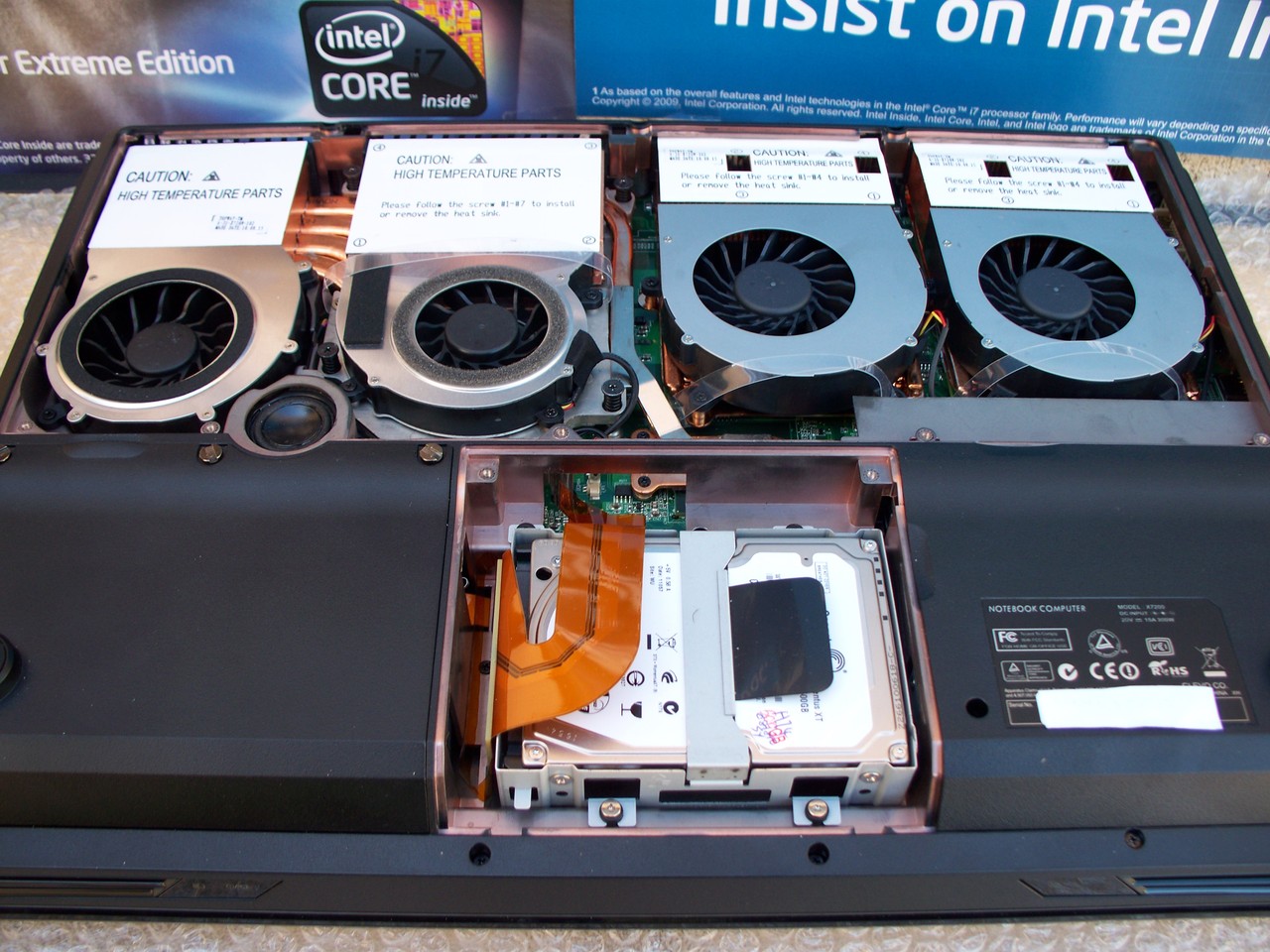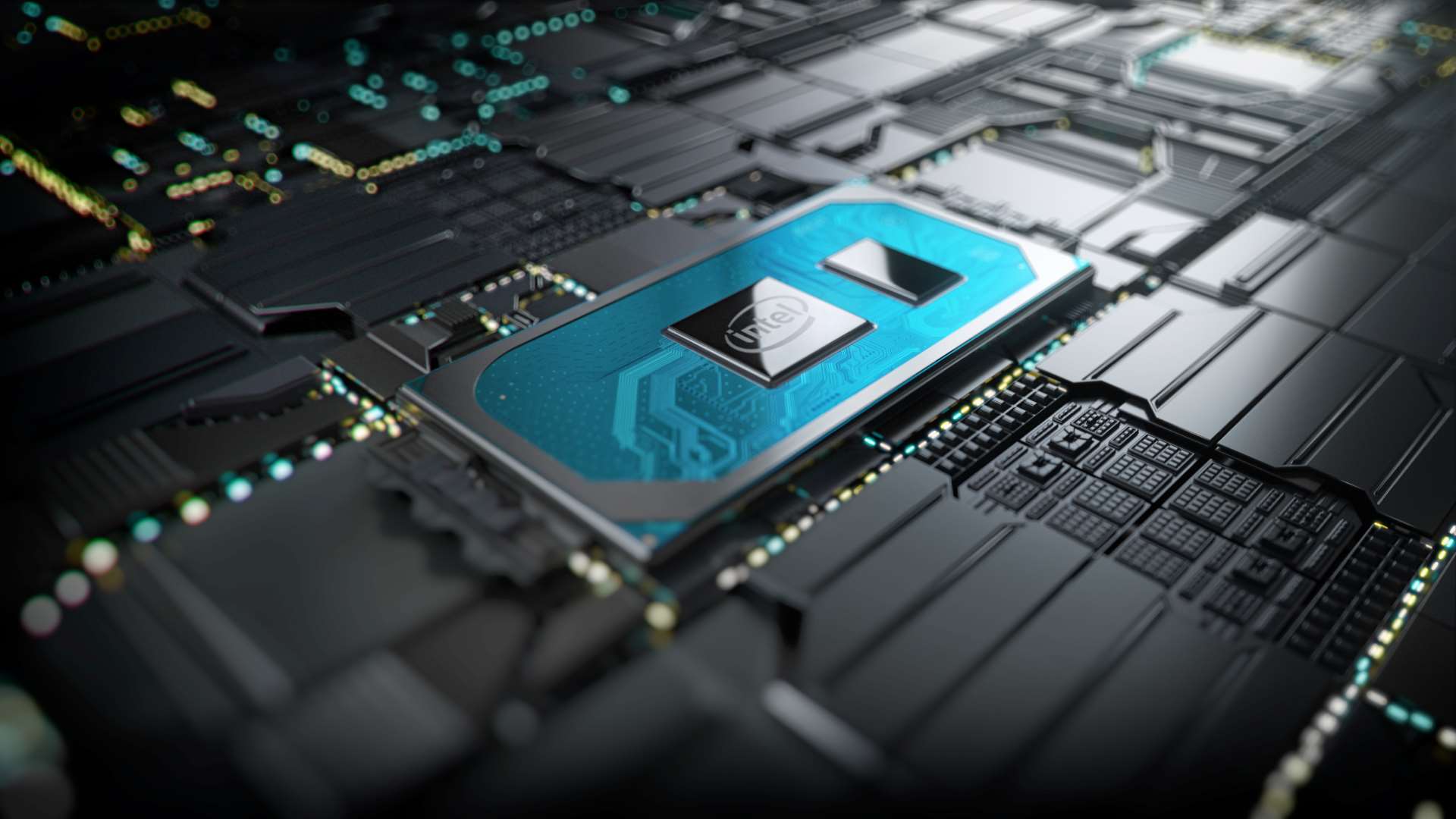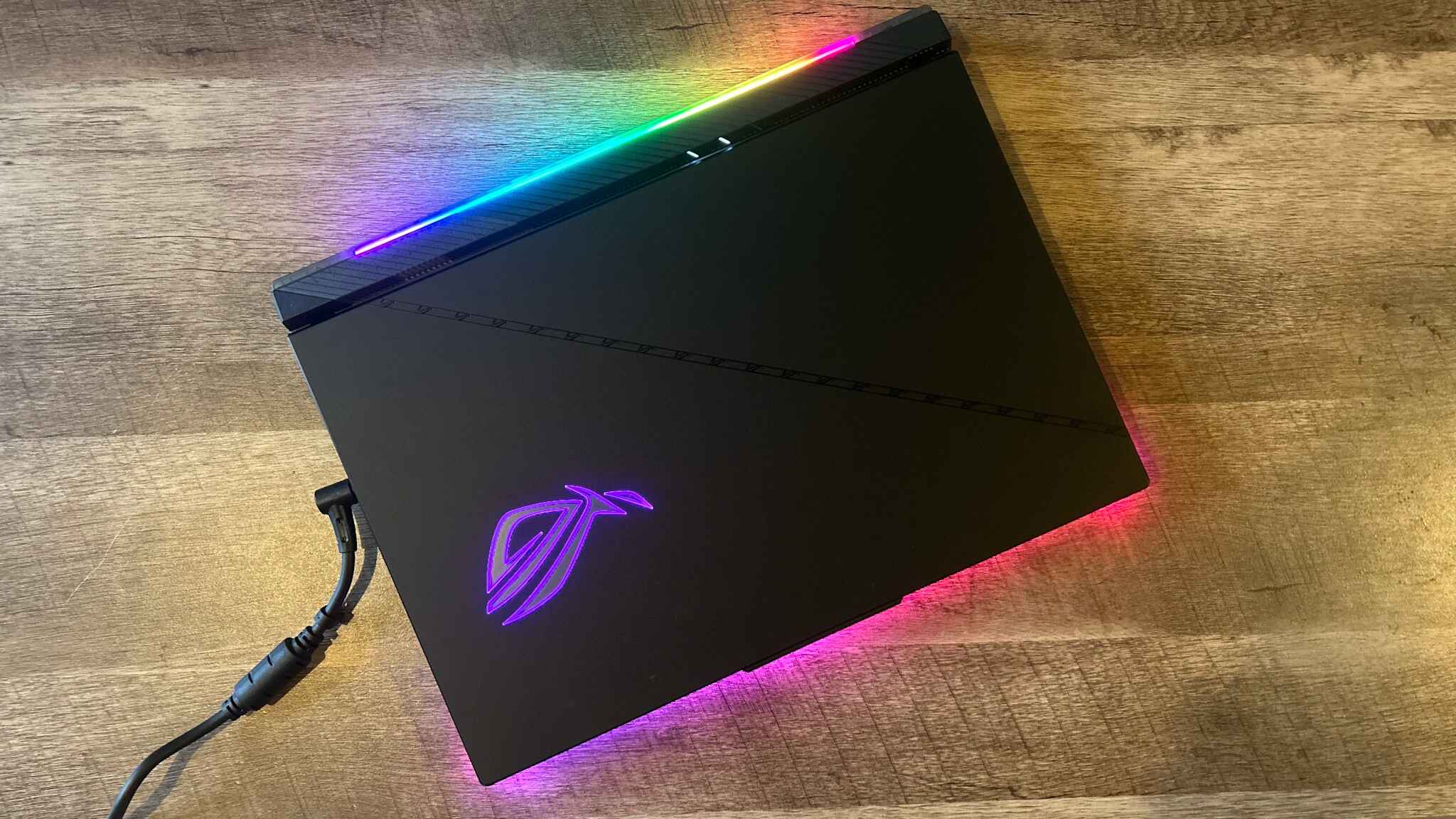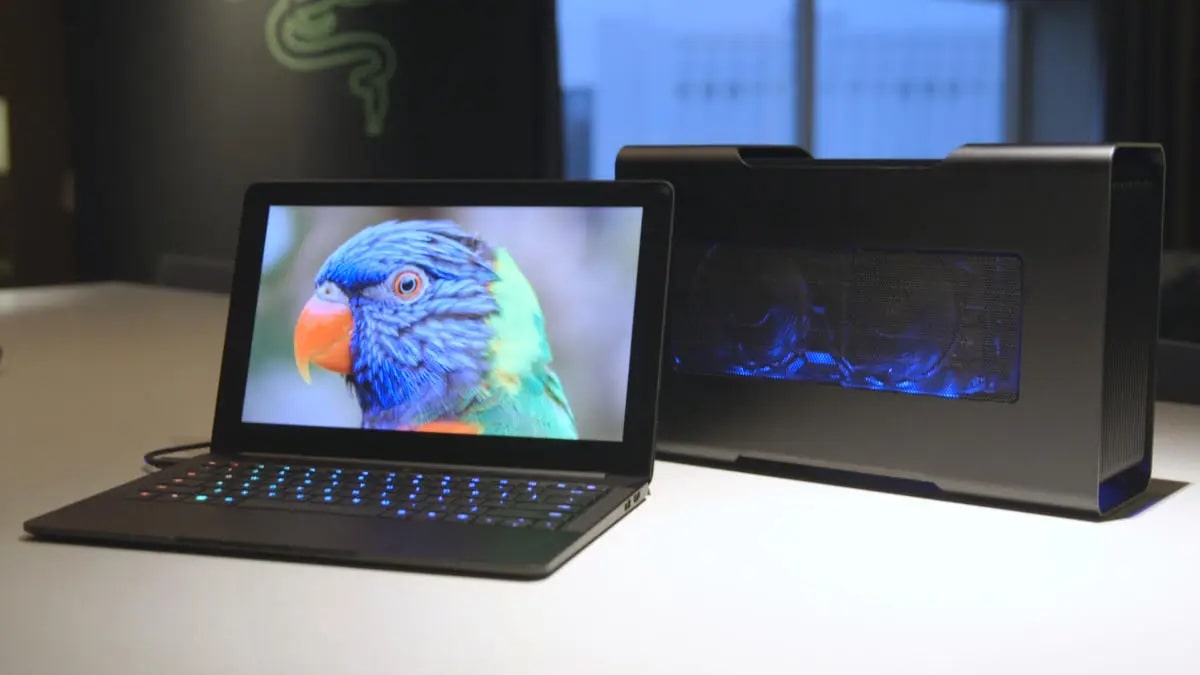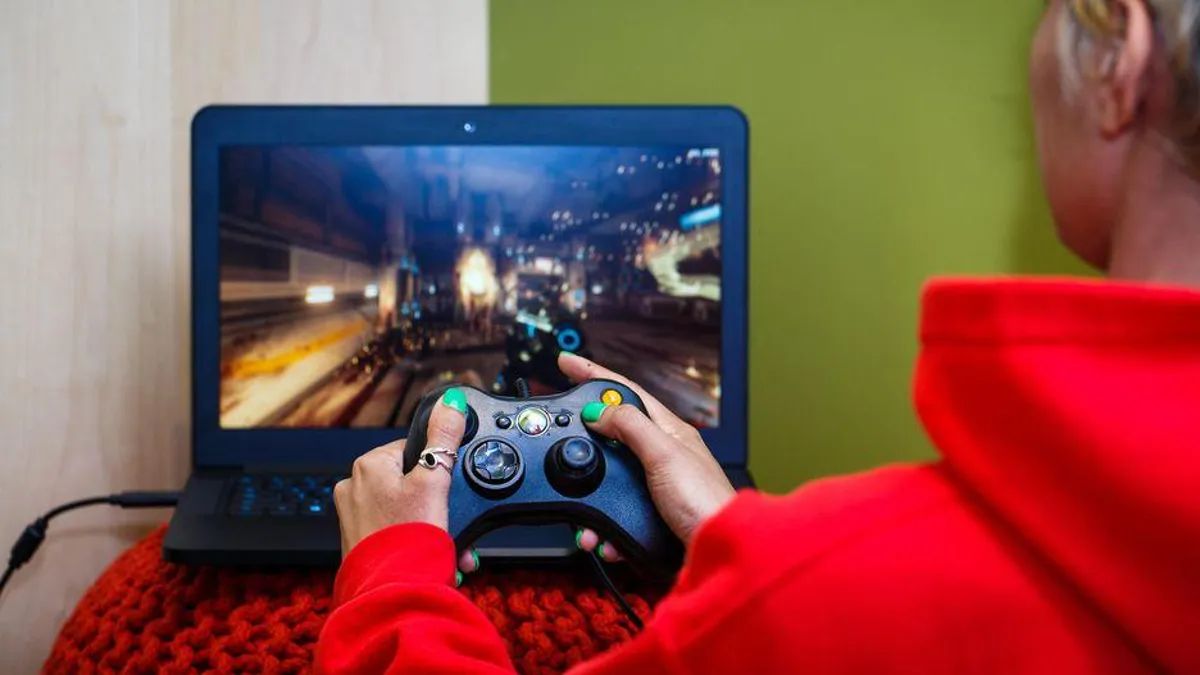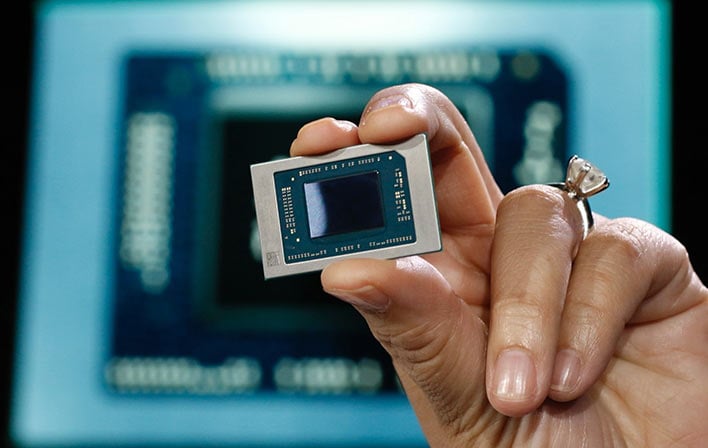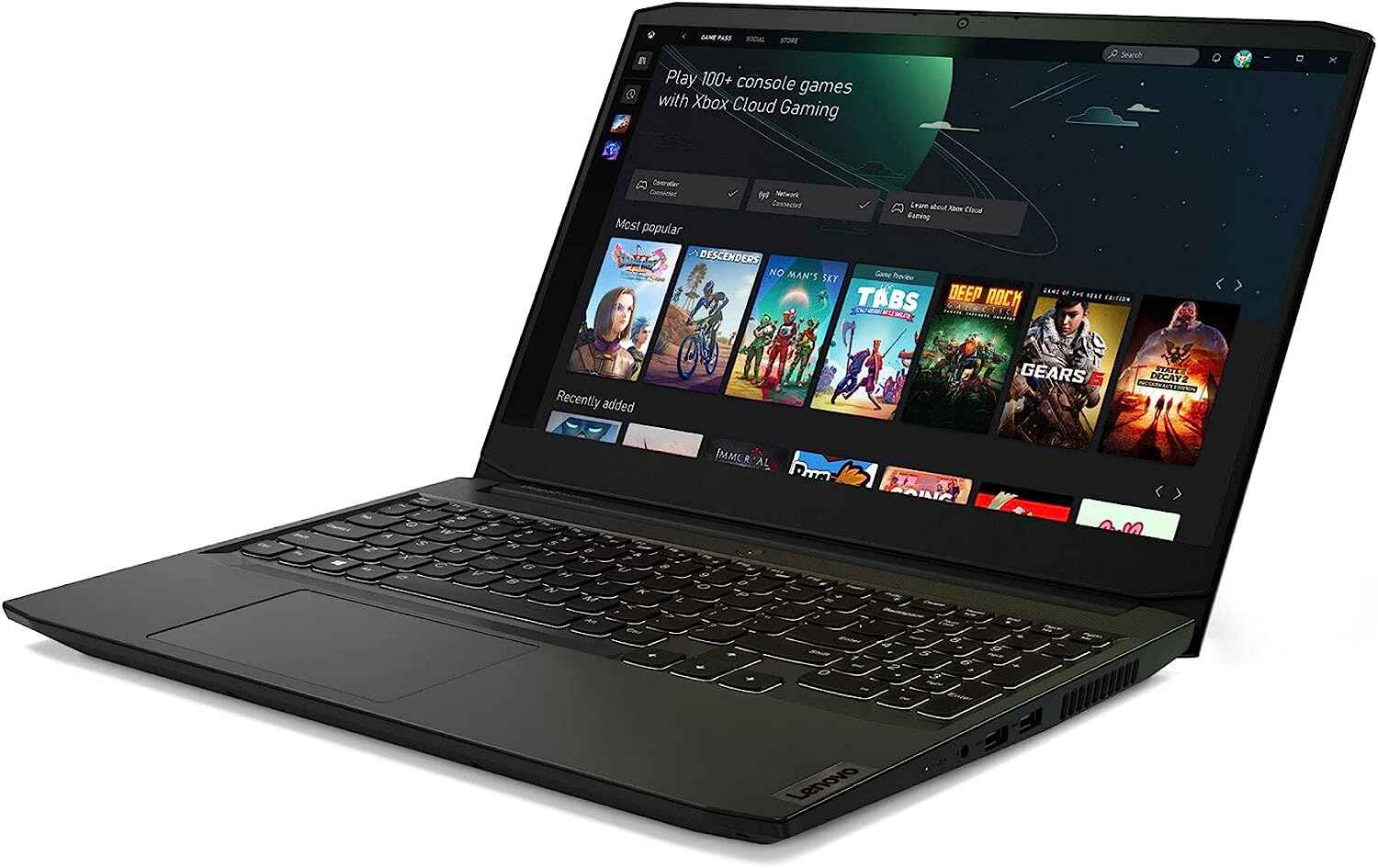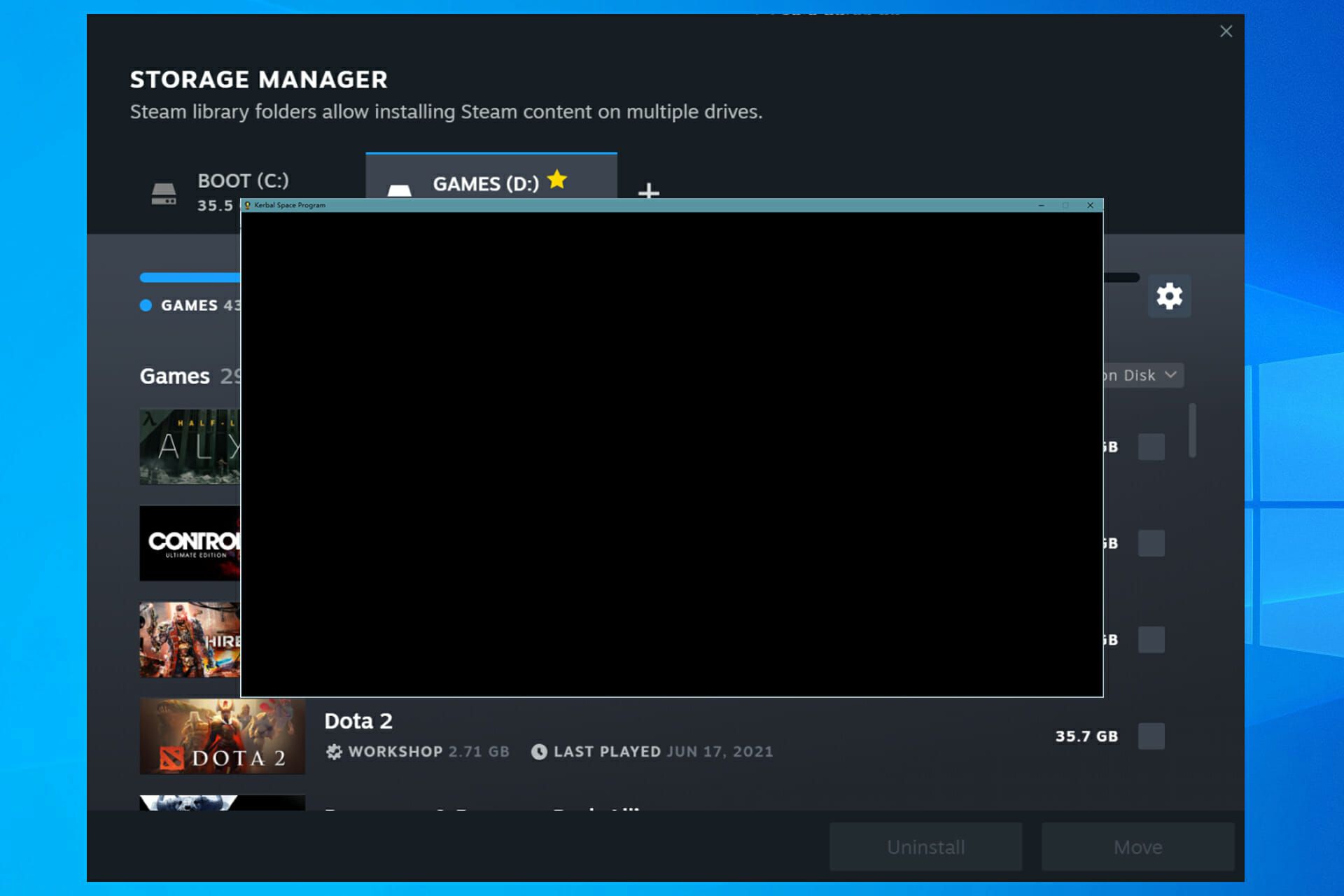Introduction
Welcome to the world of gaming laptops, where the possibilities for immersive gameplay are endless. One of the most important components that can make or break your gaming experience is the graphic card. As a passionate gamer, selecting the right graphic card for your gaming laptop is essential for smooth gameplay, stunning visuals, and optimal performance.
Whether you are a casual gamer or a hardcore enthusiast, understanding the importance of a graphic card and finding the perfect fit for your gaming needs can be a daunting task. With the advances in technology, graphic cards have become more powerful and versatile, offering a wide range of options to choose from.
In this guide, we will delve into the factors that you should consider when selecting a graphic card for your gaming laptop. We will explore budget considerations, performance requirements, different types of GPUs, memory capacity, cooling solutions, power requirements, compatibility, and the importance of reading reviews and comparisons. By the end of this guide, you will have a comprehensive understanding of what to look for in a graphic card and how to make an informed decision.
So, whether you are looking to enjoy the latest AAA titles or dive into the world of virtual reality gaming, join us on this journey as we explore the exciting realm of graphic cards for gaming laptops.
Understanding the Importance of a Graphic Card in a Gaming Laptop
When it comes to gaming, smooth and visually stunning gameplay is the ultimate goal. This is where the graphic card plays a crucial role. The graphic card, also known as the GPU (Graphics Processing Unit), is responsible for rendering and displaying graphics on your gaming laptop’s screen.
A powerful and efficient graphic card can significantly enhance your gaming experience by delivering high-quality visuals, realistic textures, and smooth frame rates. It is responsible for handling complex shaders, rendering 3D models, and processing intricate visual effects, all in real-time.
Without a capable graphic card, your gaming laptop may struggle to run the latest games at their optimal settings. You might experience lag, stuttering, and graphical glitches that can hinder your enjoyment and competitiveness. This is especially true for graphically demanding games that require advanced rendering techniques and high-resolution textures.
Moreover, a good graphic card is not only essential for gaming but also for other graphic-intensive tasks such as video editing, 3D rendering, and graphic design. These tasks rely heavily on the computational power and memory of the graphic card to perform complex calculations and render intricate visual elements.
As technology advances, newer graphic cards are introduced with improved performance and advanced features. These advancements include higher memory capacities, faster clock speeds, more efficient power consumption, and support for the latest rendering technologies like ray tracing and DLSS (Deep Learning Super Sampling).
Therefore, selecting the right graphic card for your gaming laptop is pivotal to ensure a smooth and immersive gaming experience. It is essential to understand the various factors involved in choosing a graphic card that aligns with your specific gaming needs, budget, and laptop configuration.
In the next sections, we will delve into the key factors to consider when selecting a graphic card for your gaming laptop. From budget considerations to performance requirements, we will provide you with the knowledge and insights to make an informed decision and find the perfect graphic card that sets the stage for an extraordinary gaming journey.
Factors to Consider When Selecting a Graphic Card for a Gaming Laptop
With a multitude of graphic cards available in the market, it can be overwhelming to choose the right one that suits your gaming needs. To help you make an informed decision, there are several important factors that you should consider:
1. Budget: Set a budget for your graphic card purchase. Determine how much you are willing to spend and look for options that offer the best value for your money. Keep in mind that higher-end graphic cards typically come with a heftier price tag.
2. Performance Requirements: Assess your gaming needs and the type of games you play. Consider the resolution and settings you prefer, as well as any future upgrades you may have in mind. This will aid in determining the level of performance you require from your graphic card.
3. Graphics Processing Unit (GPU): Different GPUs have varying levels of performance and capabilities. Research and compare different GPU models to find one that provides the power and features you need for your gaming experience.
4. Memory Capacity: The amount of video RAM (VRAM) on your graphic card is crucial for handling complex textures and high-resolution displays. Games with higher graphics settings and resolutions typically require more VRAM for optimal performance.
5. Cooling Solutions: Efficient cooling is essential to prevent overheating and keep your graphic card running smoothly. Look for graphic cards with effective cooling solutions, such as dual or triple-fan designs and heat pipes, to ensure optimal thermal management.
6. Power Requirements: Ensure that your gaming laptop’s power supply can handle the power demands of the graphic card you are considering. Check the recommended power supply wattage and determine if any additional power connectors are required.
7. Compatibility: Verify that the graphic card is compatible with your laptop’s motherboard and operating system. Consider the physical dimensions of the card to ensure it fits within your laptop’s chassis.
8. Reviews and Comparisons: Read reviews and comparisons of different graphic cards to gain insights from other users and experts. This can help you understand the performance, reliability, and overall quality of the card before making a final decision.
By evaluating these factors and conducting thorough research, you can narrow down your options and select a graphic card that delivers the best gaming experience within your budget. Remember to prioritize your specific gaming needs and make a well-informed decision to ensure optimal performance and satisfaction.
Budget Considerations: Finding the Best Graphic Card for Your Price Range
When it comes to purchasing a graphic card for your gaming laptop, your budget plays a vital role in determining your options. It’s important to find the best graphic card that offers the optimum balance between performance and price. Here are some key considerations to keep in mind when evaluating graphic cards within your price range:
1. Determine Your Budget: Before delving into the world of graphic cards, establish a budget that you are comfortable with. This will help narrow down your options and prevent overspending.
2. Research Available Options: Explore different graphic cards within your budget range. Look for reputable brands that offer a variety of models and check their specifications, features, and performance benchmarks.
3. Prioritize Performance: While staying within your budget is essential, don’t compromise on performance. Evaluate which graphic cards provide the best performance for the price. Consider factors such as clock speeds, number of CUDA cores (for Nvidia cards), and core counts (for AMD cards).
4. Consider Future Upgrades: If you plan to upgrade your gaming laptop in the future, keep in mind the compatibility of the graphic card with potential upgrades. Investing in a slightly more expensive card now may save you money in the long run, as you won’t have to replace it when you upgrade your laptop.
5. Refurbished or Pre-Owned Options: Consider exploring refurbished or pre-owned graphic cards to find potential bargains. These cards are often sold at a lower price while still offering respectable performance. Just ensure that you purchase from reputable sellers and inquire about any warranty coverage.
6. Look for Deals and Promotions: Keep an eye out for special deals, discounts, and promotions. Retailers often offer seasonal sales or bundle deals that can provide additional value for your money.
7. Consider Alternative Brands: Don’t limit yourself to the most popular brands. Lesser-known brands might offer competitive performance at a lower price point. However, be sure to research and verify their reliability and customer support before making a purchase.
8. Read User Reviews: Take the time to read user reviews and testimonials. Look for feedback on the performance, durability, and value for money of the graphic card models you are considering. This can give you insights into real-world experiences and help you make an informed decision.
By considering these budget-related factors, you can find the best graphic card that fits within your price range without compromising on performance. Remember to strike a balance between your budget and your gaming requirements to ensure an enjoyable and immersive gaming experience.
Performance Requirements: Determining the Right Level of Graphic Card for Your Gaming Needs
When selecting a graphic card for your gaming laptop, it’s important to determine the level of performance you need to meet your gaming requirements. Each game has different graphics demands, and finding the right level of graphic card can make all the difference in your gaming experience. Here are some factors to consider when determining the right level of graphic card for your gaming needs:
1. Game Requirements: Assess the system requirements of the games you plan to play. Look for the recommended graphic card specifications provided by game developers. This information will give you a general idea of the level of graphic card needed to achieve optimal performance.
2. Desired Settings and Resolution: Consider the graphical settings and resolution at which you want to play your games. Higher settings and resolutions demand more processing power. If you aim for 1080p gaming at high settings, a mid-range graphic card should suffice. However, for 1440p or 4K gaming with maximum settings, you may need a high-end graphic card.
3. Frame Rates: Determine your desired frame rate. If you’re content with 60 frames per second (FPS), a mid-range graphic card can deliver smooth gameplay. However, if you’re after highly competitive and fast-paced gaming or looking to experience high refresh rate displays, you may want to consider a high-end graphic card capable of pushing beyond 60 FPS.
4. Future-Proofing: Consider your future gaming needs and potential upgrades. If you plan to play upcoming graphically demanding games or upgrade to a higher-resolution monitor in the future, investing in a more powerful graphic card now may be beneficial to avoid the need for another upgrade soon.
5. Budget Constraints: Your budget will inevitably play a role in determining the level of graphic card you can afford. Balance your performance requirements with your budget to find the best compromise that suits your gaming needs.
6. Research Benchmarks: Look for benchmark tests and reviews for different graphic cards in games similar to the ones you plan to play. This will give you an idea of how each card performs in real-world scenarios and help you make an informed decision.
7. Consider CPU Bottleneck: Ensure that your CPU is powerful enough to keep up with the selected graphic card. A mismatch between the CPU and graphic card can result in suboptimal performance, limiting the potential of your gaming system.
8. Overclocking Potential: If you are interested in overclocking your graphic card to squeeze out additional performance, make sure to choose a card with good overclocking capabilities and sufficient cooling solutions.
By carefully considering your gaming requirements, resolution preferences, and future plans, you can determine the right level of graphic card that will deliver the performance needed for an exceptional gaming experience. Strike a balance between your desired in-game settings, frame rates, and budget to find the perfect graphic card that brings your gaming adventures to life.
Graphics Processing Unit (GPU): Exploring Different Options Available
The Graphics Processing Unit (GPU) is the heart and soul of a graphic card, responsible for rendering and processing graphics in your gaming laptop. Understanding the different GPU options available is crucial when selecting a graphic card for your gaming needs. Here are some popular GPU options to explore:
1. NVIDIA GeForce: NVIDIA is a leading provider of GPUs, offering a wide range of options for gamers. Their GeForce lineup includes models like the GTX and RTX series. The GTX series provides excellent performance for 1080p gaming and entry-level 1440p gaming, while the RTX series introduces advanced features like ray tracing and DLSS for a more immersive gaming experience.
2. AMD Radeon: AMD’s Radeon GPUs have become increasingly popular in the gaming community. The Radeon RX series offers a range of options, from budget-friendly models to high-end cards for 1440p and 4K gaming. AMD’s graphics cards generally provide excellent value for money and are known for their efficient power consumption.
3. Integrated Graphics: Some gaming laptops come with integrated graphics that are built into the CPU. While these GPUs may not offer the same level of performance as dedicated graphic cards, they can still handle less demanding games and provide a cost-effective solution for casual gamers or those on a tight budget.
4. Mobile GPUs: Mobile GPUs are designed specifically for gaming laptops, offering a balance between performance and power efficiency. Manufacturers like NVIDIA and AMD create mobile versions of their GPUs to fit within the constraints of a laptop’s thermal and power capabilities. These mobile GPUs deliver ample performance for gaming while ensuring optimal battery life.
5. Custom GPU Designs: Some graphic card manufacturers offer custom designs and overclocked versions of popular GPUs. These custom models may come with enhanced cooling solutions, higher clock speeds, and other features that offer better performance compared to standard reference designs. However, they often come at a higher price point.
6. GPU Comparison and Reviews: To make a well-informed decision, it’s important to compare the performance, features, and reliability of different GPU options. Online reviews and benchmark tests can provide valuable insights into the strengths and weaknesses of each GPU model, helping you narrow down your choices.
7. Future GPU Releases: Keep an eye out for upcoming GPU releases and new architectural advancements from both NVIDIA and AMD. These new generations of GPUs typically offer improved performance and cutting-edge features, which can be worth considering if you are looking for the latest and greatest technology.
By exploring these different GPU options, you can find the right balance between performance, features, and cost that meets your gaming requirements. Consider your budget, current and future gaming needs, and research GPU reviews to find the perfect graphic card that will deliver the best visual experience for your gaming adventures.
Memory: Understanding the Impact of VRAM on Gaming Performance
When selecting a graphic card for your gaming laptop, one crucial factor to consider is the amount of Video RAM (VRAM) it offers. VRAM is dedicated memory on the graphic card that stores and accesses data related to graphics processing. Understanding the impact of VRAM on gaming performance is essential to ensure smooth gameplay and optimal graphical fidelity. Here’s what you need to know:
1. Texture and Asset Loading: VRAM plays a vital role in loading and storing high-resolution textures, models, and other graphical assets in memory. Having sufficient VRAM allows games to load these assets quickly, resulting in reduced stuttering and improved overall performance.
2. Higher Graphics Settings: Games with higher-quality graphics settings such as Ultra or High often require more VRAM to store the additional graphical data. Insufficient VRAM can lead to visual artifacts, texture pop-in, or even game crashes when pushing graphical settings beyond the available VRAM capacity.
3. Resolution and Display: Higher display resolutions, such as 1440p or 4K, require more VRAM to store the additional pixels and textures. To ensure smooth performance and prevent degradation in visual quality, it is advisable to opt for a graphic card with a larger VRAM capacity when gaming at higher resolutions.
4. Multi-Monitor and VR Setups: Gaming across multiple monitors or with virtual reality (VR) setups places additional demands on the VRAM. Each display or VR headset requires VRAM to store its respective screen space, textures, and other graphical elements. Ensure that your graphic card has sufficient VRAM to accommodate these setups without compromising performance.
5. Future Game Requirements: Gaming technology is constantly evolving, and newer games tend to have higher VRAM requirements. Considering upcoming titles and their recommended VRAM specifications can help future-proof your gaming laptop for upcoming releases. Opting for a graphic card with higher VRAM capacity ensures it can handle the graphical demands of games for years to come.
6. Memory Bandwidth: Alongside VRAM capacity, the memory bandwidth of the graphic card also influences gaming performance. Higher memory bandwidth allows for faster data transfer, which enables the GPU to access VRAM more efficiently. It’s important to strike a balance between VRAM capacity and memory bandwidth to maximize overall performance.
7. System RAM and Graphics Memory: It’s worth noting that VRAM is separate from your system’s RAM (Random Access Memory). While system RAM is responsible for general computing tasks, VRAM focuses specifically on graphical data. A dedicated VRAM ensures faster access to graphical assets, which leads to smoother gaming performance.
8. Benchmark Tests and Reviews: To determine the optimal VRAM capacity for your gaming needs, it’s helpful to consult benchmark tests and read reviews of graphic cards. These resources can provide insights into how different VRAM capacities affect performance in specific games and scenarios.
By understanding the impact of VRAM on gaming performance and considering factors such as graphics settings, resolution, future game requirements, and memory bandwidth, you can make an informed decision when selecting a graphic card with an adequate VRAM capacity. This ensures an immersive gaming experience with stunning visuals and seamless gameplay.
Cooling Solutions: Ensuring Optimal Thermal Management for Your Graphic Card
Efficient thermal management is crucial for maintaining the performance and longevity of your graphic card in a gaming laptop. The powerful GPUs used in gaming laptops generate significant heat while under heavy load. Ensuring your graphic card has effective cooling solutions in place can prevent overheating and maintain optimal performance. Here’s what you need to know about cooling solutions:
1. Cooling Solutions: Graphic cards typically employ various cooling solutions to dissipate heat. The most common types are active cooling, which involves fans or blowers, and passive cooling, which relies on heat sinks and heat pipes. Some high-end graphic cards even feature hybrid cooling systems that combine both active and passive cooling methods.
2. Fan Configurations: Graphic cards with fans can have different configurations, such as single fan, dual fan, or even triple fan designs. Multiple fans generally provide better heat dissipation, resulting in lower operating temperatures and improved performance. However, they may occupy more space and generate more noise compared to single fan designs.
3. Heat Sinks and Heat Pipes: Heat sinks are metal structures designed to spread and dissipate heat across a larger surface area. Heat pipes, on the other hand, are sealed copper or aluminum tubes filled with heat-absorbing liquid that transfers heat away from the GPU to the heat sinks. These passive cooling solutions are effective in removing heat and keeping the graphic card’s temperature in check.
4. Airflow and Ventilation: Proper airflow within your gaming laptop is essential for effective cooling. Ensure that your laptop has sufficient ventilation and that the cooling vents are not obstructed by dust or other materials. Proper ventilation allows cool air to enter and hot air to be expelled from the laptop, reducing the overall temperature of the graphic card.
5. Overclocking Considerations: If you plan to overclock your graphic card to squeeze out more performance, it’s vital to prioritize cooling solutions. Overclocking generates additional heat, so ensuring that your cooling system can handle the increased thermal load is crucial to avoid overheating and potential instability.
6. Thermal Monitoring Software: Many graphic card manufacturers provide software utilities that allow you to monitor the temperature and performance of your graphic card in real-time. These tools can help you keep an eye on temperature levels and adjust fan speeds if necessary to maintain optimal thermal management.
7. Cleaning and Maintenance: Regular cleaning and maintenance of your laptop’s cooling system can help prevent dust buildup and ensure optimal airflow. Use compressed air or a small brush to remove dust from the cooling vents and fans. This simple maintenance routine can significantly improve the cooling efficiency of your graphic card.
8. Additional Cooling Solutions: If you are concerned about heat management, there are additional cooling solutions available, such as external laptop cooling pads or laptop cooling stands. These devices are designed to provide additional airflow and cooling to your gaming laptop, further reducing the operating temperatures of the graphic card.
By ensuring optimal thermal management through effective cooling solutions, you can prolong the lifespan of your graphic card and maintain stable performance during intense gaming sessions. Implementing proper cooling practices and considering additional cooling solutions when necessary will help keep your gaming laptop running smoothly and maintain optimal temperatures for your graphic card’s performance.
Power Requirements: Selecting a Graphic Card That Fits Your Laptop’s Power Supply
When choosing a graphic card for your gaming laptop, it’s essential to consider its power requirements and ensure compatibility with your laptop’s power supply. Selecting a graphic card that draws too much power can strain your laptop’s power delivery system and lead to stability issues. Here’s what you need to know about power requirements:
1. Power Consumption: Graphic cards vary in their power consumption, with higher-end models typically requiring more power. Manufacturers provide a specification called “TDP” (Thermal Design Power) that indicates the maximum power consumption of the graphic card. Consider this value when evaluating the power requirements.
2. Power Supply Wattage: Check the wattage rating of your laptop’s power supply. Ensure that it can provide enough power to support the graphic card you plan to install. Most laptops come with a power supply that is designed to handle the power demands of the internal components, including the graphic card.
3. Additional Power Connectors: Some high-performance graphic cards require additional power connectors, such as 6-pin or 8-pin connectors, directly from the power supply. Ensure that your laptop’s power supply has the necessary connectors available or can provide adapters to accommodate the graphic card’s power requirements.
4. Upgrading the Power Supply: In some cases, upgrading the power supply of your laptop may be necessary to support more power-hungry graphic cards. However, this can be challenging or impossible in laptops with non-removable power supplies. Check with your laptop’s manufacturer or consult a professional if you are considering upgrading the power supply.
5. Power Delivery System: The power delivery system within your laptop includes components like voltage regulators, capacitors, and power circuits. Ensure that your laptop’s power delivery system can handle the power demands of the graphic card without overheating or becoming overloaded. Refer to your laptop’s documentation or consult with the manufacturer for guidance.
6. Power Efficiency: Consider the power efficiency of the graphic card. Some models offer higher efficiency, which means they deliver better performance per watt of power consumed. This can result in reduced heat generation and better overall power utilization.
7. Power Monitoring: Some graphic cards and software utilities provide power monitoring features that allow you to track power consumption and adjust performance settings accordingly. Utilize these tools to optimize power usage and fine-tune the performance of your graphic card within the capabilities of your laptop’s power supply.
8. Consult Manufacturer Recommendations: Review the manufacturer’s documentation, website, or support resources for any specific recommendations or compatibility guidelines regarding power requirements. This will help ensure you choose a graphic card that aligns with your laptop’s power supply capabilities.
By carefully considering the power requirements of the graphic card and ensuring compatibility with your laptop’s power supply and delivery system, you can avoid power-related issues and maintain stable performance. Prioritize the safety and reliability of your laptop by selecting a graphic card that fits within the power specifications, ensuring an optimal gaming experience without compromising your laptop’s overall functionality.
Compatibility: Checking for Compatibility with Your Laptop’s Motherboard and Operating System
When selecting a graphic card for your gaming laptop, it’s crucial to check for compatibility with your laptop’s motherboard and operating system. Ensuring compatibility is essential to prevent any hardware or software conflicts that could hinder the performance and functionality of your graphic card. Here’s what you need to know:
1. Form Factor and Physical Dimensions: Graphic cards come in various form factors and sizes. Ensure that the graphic card you choose fits within your laptop’s chassis. Consider factors such as length, width, and height to ensure proper installation without any physical limitations.
2. Interface Compatibility: Check the interface compatibility between the graphic card and your laptop’s motherboard. Most gaming laptops use the PCIe (Peripheral Component Interconnect Express) interface for connecting graphic cards. Ensure that your laptop supports the required PCIe version (e.g., PCIe 3.0 or PCIe 4.0) for proper communication and performance.
3. Operating System Support: Confirm that the graphic card you choose is compatible with your laptop’s operating system. Check the manufacturer’s website or product specifications to verify support for your specific OS version. This ensures that the necessary drivers and software are available for proper installation and functionality.
4. Driver Availability: Graphic cards require specific drivers to enable proper communication and optimal performance. Check if the manufacturer provides up-to-date drivers for your laptop’s operating system. Having the latest drivers ensures compatibility with the latest games and software updates.
5. Power Supply and Connectors: Ensure that your laptop’s power supply can provide sufficient power to the graphic card. Check if the power connectors on the graphic card align with the available power connectors on your laptop’s motherboard. Compatibility in terms of power delivery is crucial to ensure stable and reliable operation.
6. BIOS and Firmware Support: Check if any BIOS or firmware updates are required to support the installation of the graphic card. Manufacturers sometimes release updates that provide compatibility fixes, optimizations, or additional features. Ensure that your laptop’s BIOS or firmware is up to date before installing a new graphic card.
7. OEM Restrictions: Some laptops may have restrictions imposed by the original equipment manufacturer (OEM). These restrictions can limit the compatibility with specific graphic cards or prevent the installation of non-OEM components. Check your laptop’s documentation or contact the manufacturer for any such restrictions.
8. Consult Manufacturer Recommendations: Review the manufacturer’s compatibility guidelines and recommendations for installing a graphic card in your specific laptop model. Manufacturers often provide detailed information on compatible graphic card models and any additional considerations for successful installation.
By thoroughly checking for compatibility with your laptop’s motherboard and operating system, you can ensure a smooth installation process and optimal performance of your graphic card. Take into account the physical dimensions, interface compatibility, power supply requirements, availability of drivers, and any OEM restrictions to make an informed decision and seamlessly integrate the graphic card into your gaming laptop.
Reviews and Comparisons: Researching and Comparing Graphic Cards Before Making a Decision
Before making a final decision on which graphic card to purchase for your gaming laptop, it is essential to conduct thorough research and compare different options. Reading reviews and comparing graphic cards can provide valuable insights into their performance, reliability, and overall quality. Here’s why reviews and comparisons are crucial in the decision-making process:
1. Performance Evaluation: Reviews offer detailed assessments of the graphic card’s performance in various games, benchmarks, and real-world scenarios. They provide valuable data on frame rates, graphical quality, and potential limitations, allowing you to gauge how well a specific card can handle your desired gaming experience.
2. Expert Opinions: Reviews often come from experts, professional reviewers, and technology enthusiasts who have extensive knowledge and experience in the field. Their opinions can shed light on the strengths and weaknesses of each graphic card, and provide insights that may not be immediately apparent from specifications alone.
3. User Feedback and Community Discussions: User reviews and community discussions provide valuable firsthand experiences and opinions from individuals who have already used the graphic card. These insights can help you understand real-world performance, reliability, and any potential issues or drawbacks associated with a particular model.
4. Comparisons and Benchmarks: Side-by-side comparisons and benchmark tests allow you to assess the performance of different graphic cards directly. They offer a clear understanding of how each option stacks up against the others, helping you make an informed decision based on actual data and performance metrics.
5. Consideration of Price-to-Performance Ratio: Reviews and comparisons can help you evaluate the price-to-performance ratio of graphic cards. By comparing the features, performance, and price points of different models, you can identify which card offers the best value for your budget, ensuring you get the most bang for your buck.
6. Reliability and Customer Support: Reviews often shed light on the reliability and customer support provided by the manufacturer. They can give you insights into issues such as build quality, driver updates, and the responsiveness of customer support teams. This information is crucial in making a decision that considers long-term satisfaction and support.
7. Knowledge of Potential Limitations: Reviews can highlight any potential limitations or drawbacks of a graphic card, such as compatibility issues, thermal performance, or power consumption. Being aware of these limitations allows you to make an informed decision and choose a graphic card that aligns with your requirements and preferences.
8. Trusted Sources and Publications: Seek reviews and comparisons from reputable sources and publications that have a track record of unbiased and thorough analysis. These sources are often well-respected within the gaming and tech communities and can provide reliable and trustworthy information.
By investing time in reading reviews and comparing different graphic cards, you can gather valuable insights, data, and opinions that will guide you towards selecting the best graphic card for your gaming laptop. Consider a variety of sources, weigh the pros and cons, and take into account your specific gaming needs to make a well-informed decision that ensures an enjoyable and immersive gaming experience.
Conclusion
Choosing the right graphic card for your gaming laptop is crucial for achieving an immersive and enjoyable gaming experience. Through careful consideration of various factors, you can find a graphic card that perfectly aligns with your budget, performance requirements, and compatibility needs.
Understanding the importance of a graphic card in a gaming laptop sets the foundation for making an informed decision. It powers the visuals and provides the processing capability needed for graphically demanding games and other graphic-intensive tasks.
Factors such as budget considerations, performance requirements, GPU options, memory capacity, cooling solutions, power requirements, compatibility, and reviews and comparisons all play a vital role in selecting the right graphic card.
By evaluating these factors and conducting thorough research, you can make an informed decision that results in a smooth gaming experience, stunning visuals, and optimal performance. Keep in mind the specific needs of your gaming setup, such as desired settings, resolution, frame rates, and potential future upgrades.
Additionally, consider the compatibility of the graphic card with your laptop’s motherboard, operating system, and power supply. Ensure efficient thermal management through effective cooling solutions to prevent overheating and maintain stable performance.
Finally, don’t forget to consult reputable reviews and comparisons from experts and users. These valuable insights provide performance evaluations, user feedback, and information on reliability and customer support that can assist you in making the best possible decision.
By considering all these factors, you can confidently select the perfect graphic card that enhances your gaming experience, delivers stunning visuals, and ensures seamless performance in the world of gaming.







